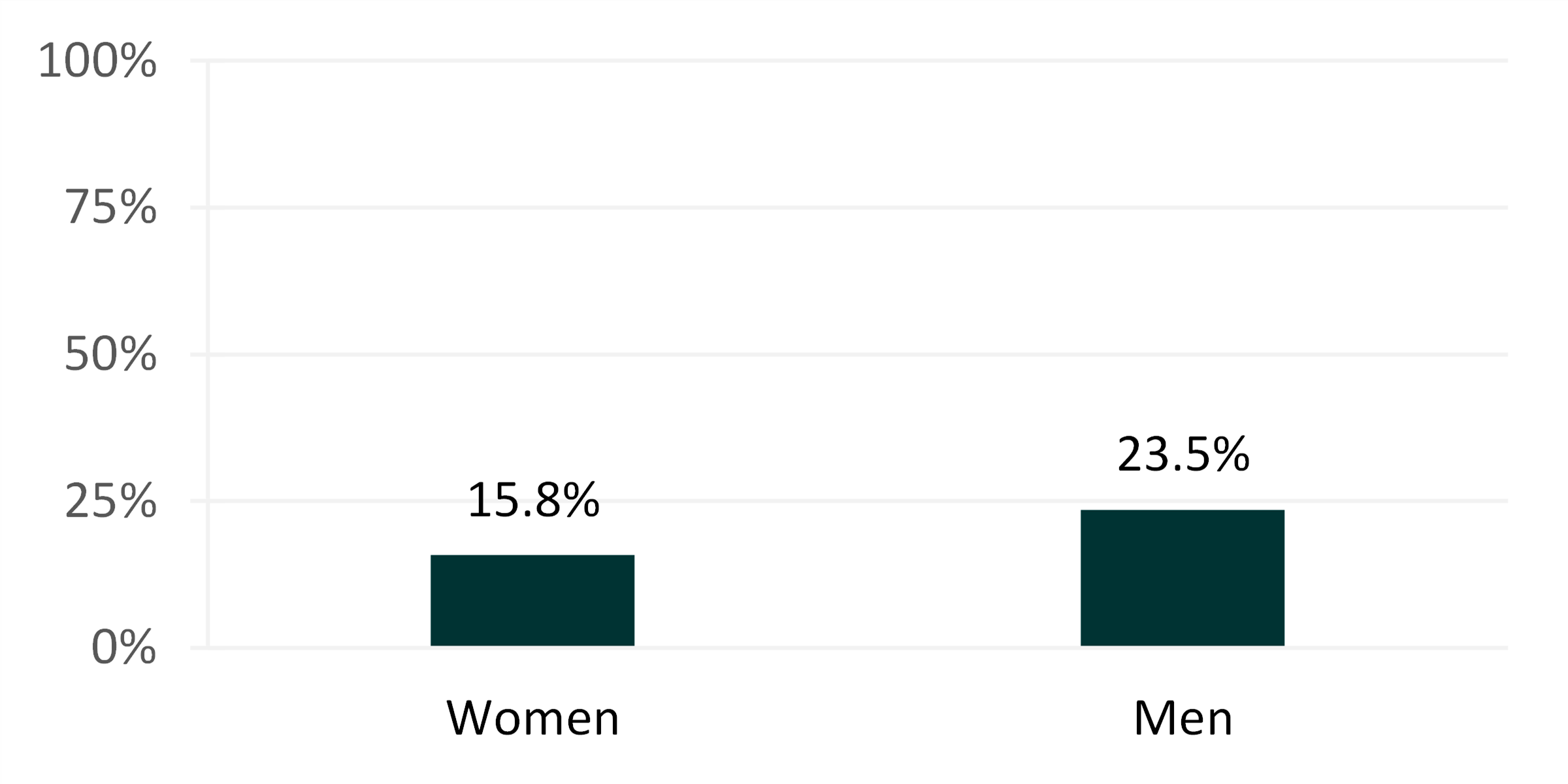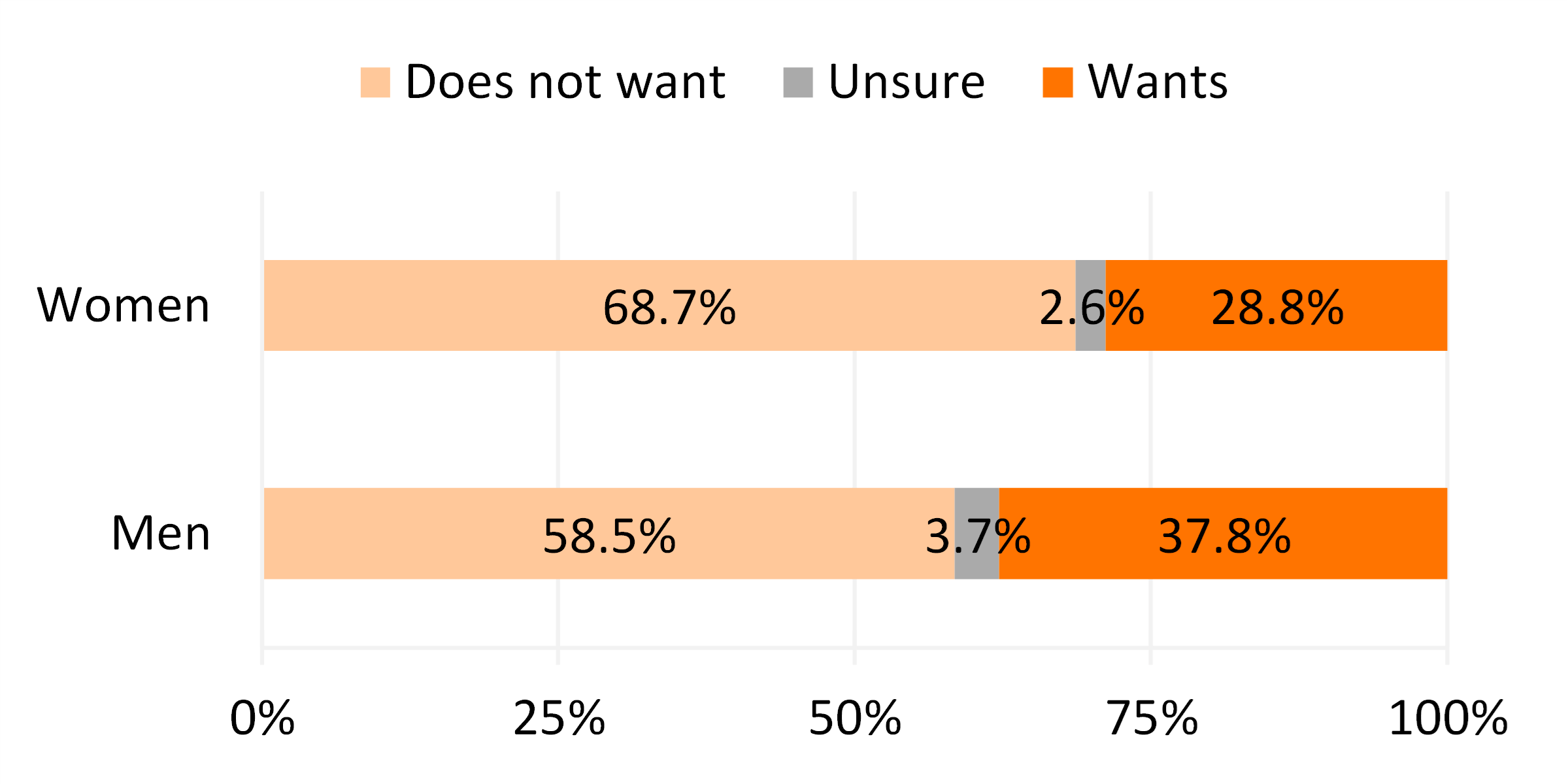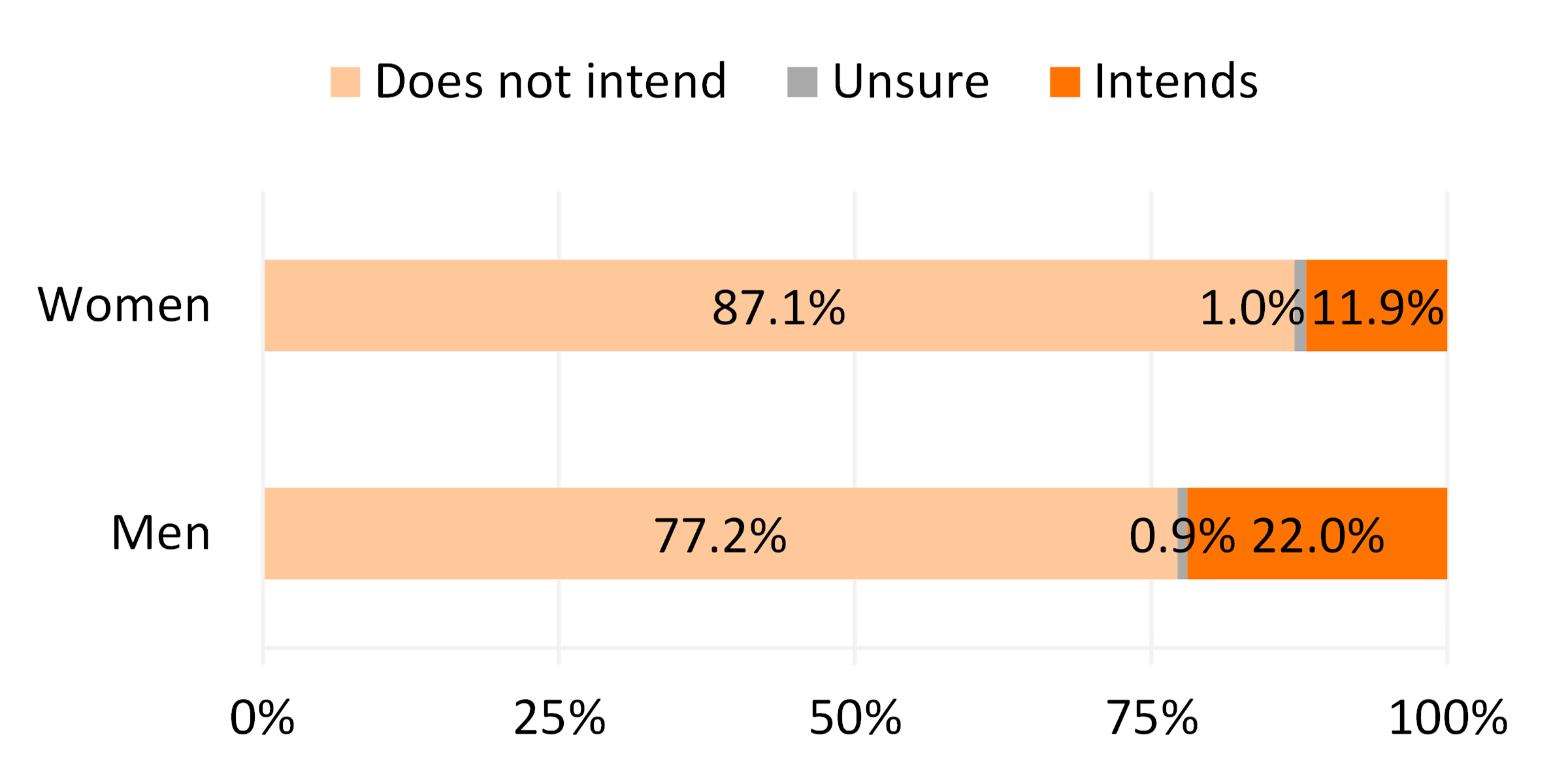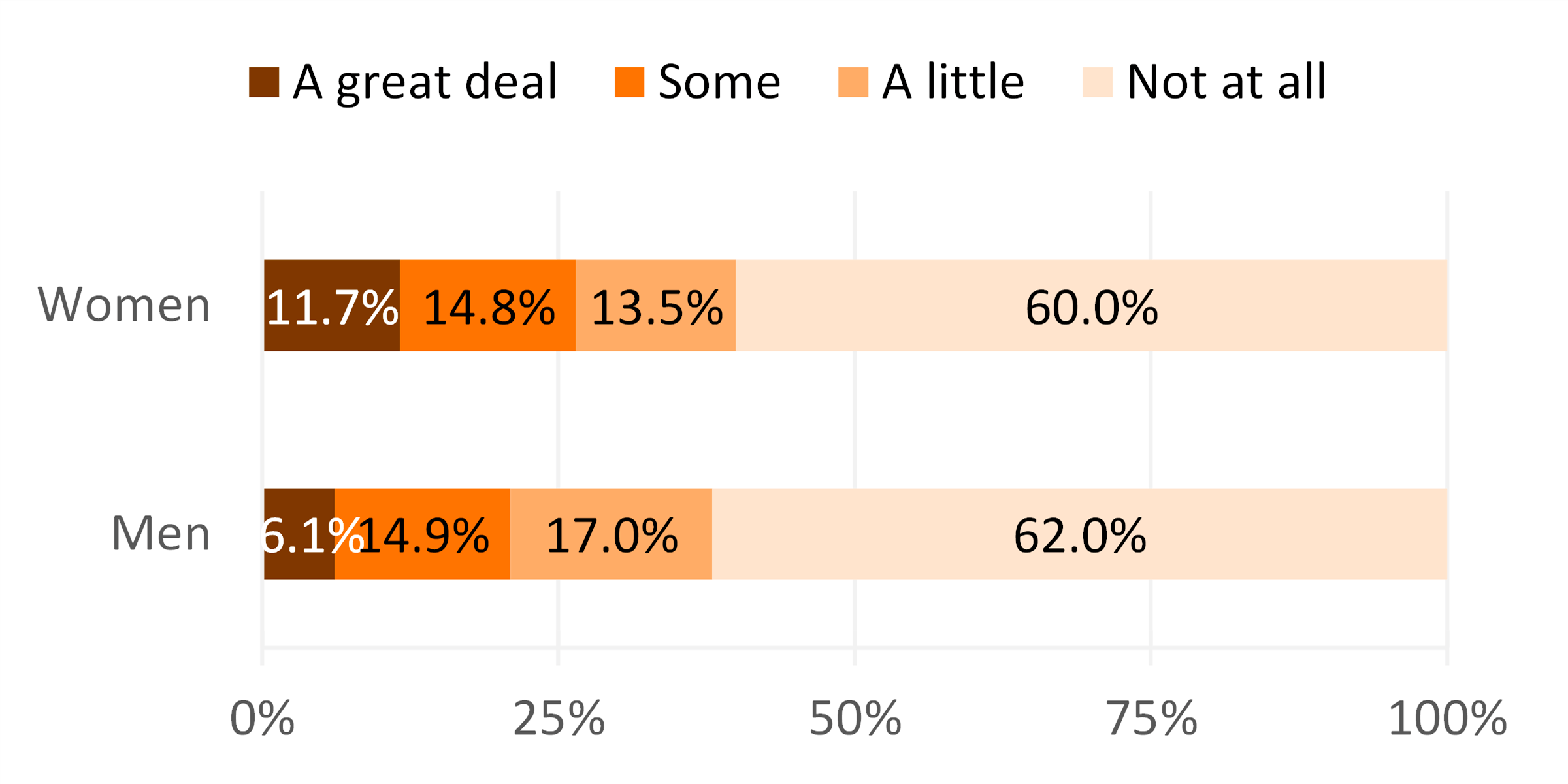Childbearing Desires, Intentions, and Attitudes Among Childless Adults 40-49
Family Profile No. 11, 2022
Author: Karen Benjamin Guzzo
The age at first birth in the U.S. has consistently increased over time (FP-20-06), and birth rates to women 40 and older have also increased (FP-18-07). Childbearing at older ages has become both more socially acceptable and, with the growth in assisted reproductive technologies, more feasible. As such, there is likely to be considerable variability in the fertility goals of childless adults in their 40s. This profile uses the 2015-2019 National Survey of Family Growth (NSFG) to examine fertility desires, intentions, and attitudes among adults aged 40-49 who have no biological children. Specifically, we consider fertility desires (whether individuals would have wanted to have a baby, if they could), fertility intentions (whether individuals intended to have a baby; that is, what they were actually going to try to do), and the extent to which individuals would have been bothered if they remained childless (i.e., if it turned out they did not have a baby). All figures are presented separately by gender. The data are weighted and represent the year 2017.
Childlessness by Gender
- Among adults 40-49, about one in four men and one in six women are childless.
Figure 1. Share Childless Among Adults 40-49 by Gender


More men than women were childless in their 40s, but more childless men than women
desired and intended to have children in the future.

Fertility Desires by Gender
- The majority of childless men and women aged 40-49 did not want to have a child, but a greater share of men than women wanted a child.
- Two thirds of women did not want to have a child, 2.6% were unsure if they wanted a child, and 29% would have wanted to have a child in the future if it were possible.
- Among men, 58.5% did not want to have a child, with 3.7% reporting they were unsure if they want a child and 37.8% reporting they would have wanted to have a child if it were possible.
Figure 2. Fertility Desires Among Childless Adults 40-49 by Gender

Fertility Intentions by Gender
- As with fertility desires, more men intended to have a child than women.
- Among women, only 11.9% intended to have a child, with 87% not intending to have a child. Just 1% of childless women in their 40s were unsure of their intentions.
- Over a fifth of childless men in their 40s intended to have a child (22.0%). Just over three fourths of men (77.2%) intended to have a child, with less than 1.0% unsure of their intentions.
- A substantial minority of childless adults in their 40s wished they could have a child but only a subset of these actually had intentions to do so, as shown by dividing the percentage who intended to have a child (Figure 3) by the percentage who desired a child (shown in Figure 2).
- Six in ten men who desired a child also intended to have a child (22.0%/37.8%), whereas only four in ten women did so (11.9%/28.8%)
Figure 3. Fertility Intentions Among Childless Adults 40-49 by Gender

Attitudes About Remaining Childless by Gender
- About six in ten childless adults in their 40s reported they would not at all be bothered if it turned out they did not have children.
- The share who would not at all be bothered if they remained childless did not vary by gender, but the share who reported they would be bothered a great deal was nearly twice as high for women than men.
- Slightly more than one in nine women (11.7%) reported they would be bothered a great deal, 14.8% would be bothered some, and 13.5% would be bothered a little if they remained childless.
- Among men, only 6.1% of men reported they would be bothered a great deal if they remained childless, with 14.9% reporting they would be bothered some, and 17% reporting they would be bothered a little.
Figure 4. How Bothered Would Be if Did Not Have Children Among Childless Adults 40-49 by Gender

Data Source:
U.S Census Bureau American Community Survey, 1-year estimates, 2019
References:
Guzzo, K. B. (2018). Childbearing among women 40 and older. Family Profiles, FP-18-07. Bowling Green, OH: National Center for Family & Marriage Research. https://doi.org/10.25035/ncfmr/fp-18-07.
Schweizer, V. & Guzzo, K. B. (2020). Age at first birth among mothers 40-44, 1990 & 2018. Family Profiles, FP-20-06. Bowling Green, OH: National Center for Family & Marriage Research. https://doi.org/10.25035/ncfmr/fp-20-06.
Suggested Citation:
Guzzo, K. B. (2022). Childbearing desires, intentions, and attitudes among childless adults 40-49. Family Profiles, FP-22-11. Bowling Green, OH: National Center for Family & Marriage Research. https://doi.org/10.25035/ncfmr/fp-22-11
Updated: 11/07/2025 03:36PM


